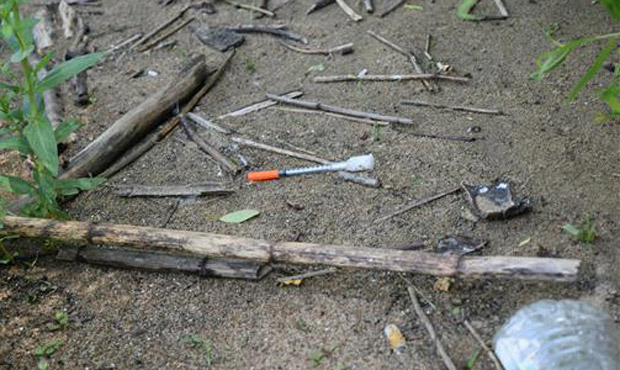Local News
‘The Drunken Botanist’ highlights plants’ role in spirits
 Plants aren't something that immediately come to mind when you're looking at a bottle of liquor, but author Amy Stewert is reminding us with her new book, "The Drunken Botanist," that liquor is made up entirely of plants. (Image courtesy Algonquin Books)
Plants aren't something that immediately come to mind when you're looking at a bottle of liquor, but author Amy Stewert is reminding us with her new book, "The Drunken Botanist," that liquor is made up entirely of plants. (Image courtesy Algonquin Books)
Plants aren’t something that immediately come to mind when you’re looking at a bottle of liquor, but author Amy Stewert is reminding us with her new book, “The Drunken Botanist,” that liquor is all made of plants.
“Really everything that’s in a bottle, behind the bar, or in a liquor store, it’s a plant. It’s nothing but liquefied plants,” Stewert tells KIRO Radio’s Seattle Kitchen Show.
“I thought it would be interesting to really look at it from that point of view and sort of look at the history and the culture and the chemistry behind all of these plants and how they get transformed into alcohol.”
Stewert says basically no plant has been left unturned in the making of alcohol. She looks at those we’re familiar with like grapes and corn, and also those that are a little more unusual and difficult to turn into alcohol.
“Agave I think is a good example of that. This plant has to be roasted in a pit underground and then shredded, and then fermented and then distilled. It’s a crazy complicated process,” says Stewert. “But you know just about every culture around the world figured out how to make alcohol from the plants they had growing around them.”
The next step in a plant’s relationship with liquor is in those that are added for flavor, explains Stewert.
“That’s kind of part two to this whole story, is that then we add all these plants to alcohol to change the flavor,” says Stewert. “The Greeks and Romans were adding herbs to wine which was in part for medicine and in part to cover up the flavor of what was probably some pretty bad wine.”
Vermouth she says is a good example of one of these drinks that takes in a lot of different plant flavors. “There’s wine with wormwood and citrus and tree bark and all kinds of spices added to it.”
Finally, the fresh plants an imbiber adds to their cocktail, is last part of plants’ mingling with alcohol. At this step, Stewert says the most important thing is that the plants are fresh.
“There’s nothing better than squeezing a fresh lime or lemon into a drink as opposed to one of those awful little plastic lemon shaped containers of juice you get at the store,” Stewert says adding it’s not even a good idea to squeeze the fruit in advance. “You have to squeeze these as the guests are arriving. This cannot be done the day before or even the morning of, the juice gets bitter, so the way you get the flavors out of this is fresh, fresh, fresh.”
Seattle Kichen with Tom Douglas and Thierry Rautureau can be heard on KIRO Radio on Saturday at 2 p.m. and Sunday at 10 a.m. Available anytime ON DEMAND at KIRORadio.com.




































Comments